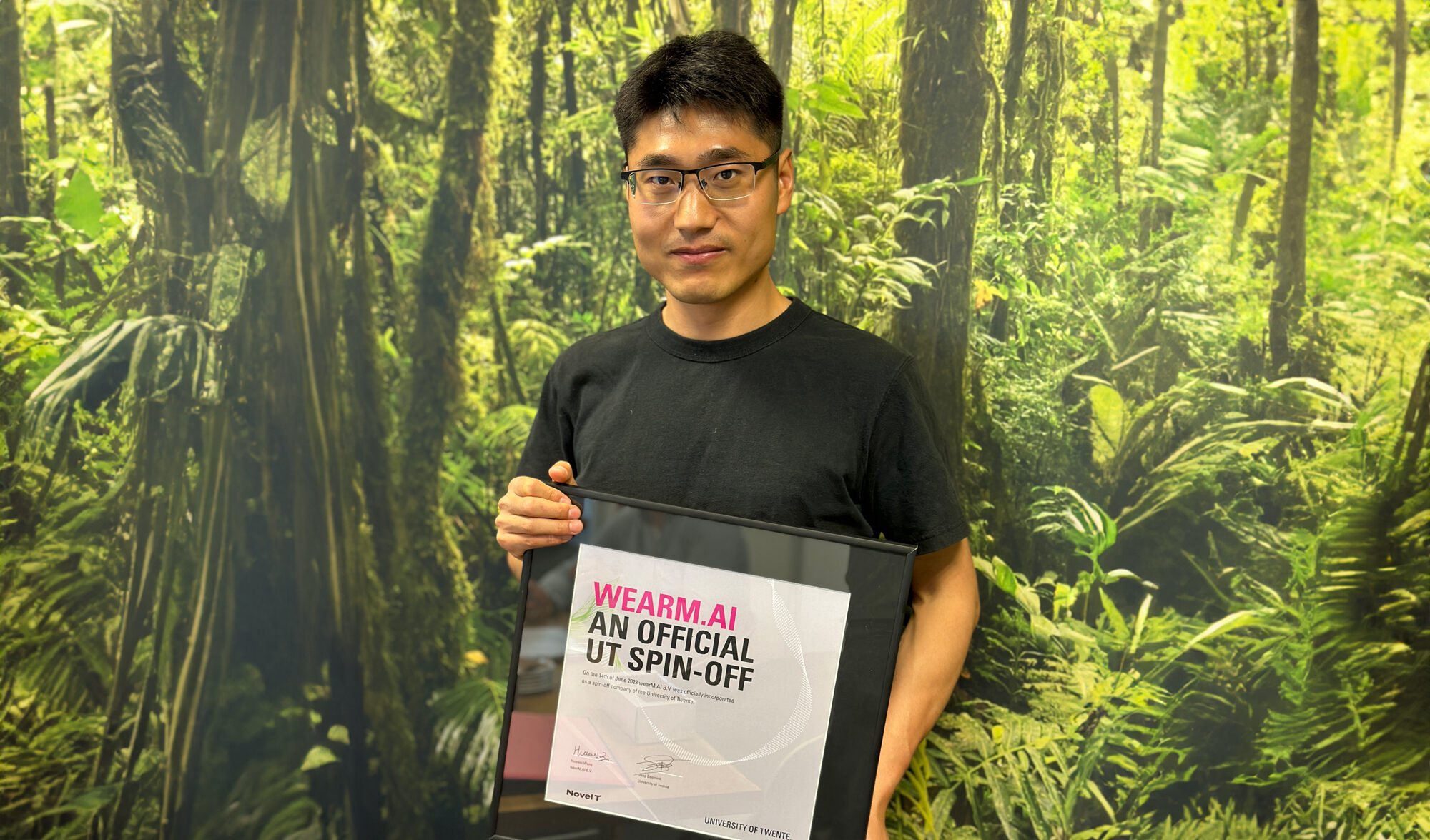Wearable technology has become increasingly common these days. While most of these gadgets give insight into health data, it remains on a surface level. Huawei Wang, researcher and founder of UT spin-off WearM.AI (pronounced as ‘where am I’), wanted to take wearable technology to the next level. He and his team are developing smart shoes which measure on-the-spot movement information deep to the muscle level. “If we gather and use these data in the right way, it can benefit our health tremendously.”
Solution for mobility conditions
Nowadays, there’s an exponentially growing market for MedTech solutions. Which comes as no surprise to Huawei. “The World Health Organization reports staggering numbers of people with mobility conditions: no less than 1.7 billion worldwide, mostly due to musculoskeletal issues. This means that those people are limited in their ability to enjoy sports, social activities, or even work. Their quality of life decreases. With our wearable technology, we can continuously monitor the muscle level body parameters. And then, using this valuable information, we can provide personal and useful tips to improve their mobility health.”
Good communication
High-tech innovations are scientifically heavy, but users shouldn’t suffer from it. Huawei is very aware of this and acts on it accordingly. “I have about ten years of research experience in human movement science. In that time, I’ve seen great research outcomes in the field when it comes to understanding how muscles behave and get injured. But it’s hard to transfer the knowledge from the lab to daily life, as there are no devices that have full wearability and in-depth assessment. WearM.AI fills that gap. Our solution is based on wearable sensors and in-depth mathematical models. But don’t get me wrong; this doesn’t mean that we are going to provide dry and complex information to the end users.
Take running as an example. If you’re running, your smart watch can give you some information about your speed, cadence, and so on. However, it cannot tell you if you are running in the correct posture or if you are using your muscles in the wrong way. We can. Once our device detects issues on specific muscles, we notify the user about the muscle issues, as well as provide useful tips, such as specific exercises which are easy to follow. We recently started collaborating with rehabilitation doctors to understand better what information users can absorb the best.”
Digitalizing health
Aside from improving the mobility and well-being of individuals, Huawei envisions a bigger impact of his technology. And the timing might just be right. “People are sometimes still afraid of new technologies. But technology is neutral: you can either use it for good or for bad. We use it to do good. Digitalization is very important for our society and has created a lot of good outcomes. But it’s mostly virtual things, such as social media. When you think of our physical health, it’s still a black hole when it comes to digitalization. We digitalize the deep movement information in daily life. By gathering the data, we can create a digital twin of the user, with which we can better forecast what’s going to happen when it comes to health. While that’s great for the individual user, imagine the impact of millions of digital twins. If you combine all of that health data, we could even train a super doctor with AI, which could really transform our health system and make it more inclusive and personalized. Of course, that won’t happen any time soon, and before it does, it’s imperative that we create a systematic way of storing and using the data so it’s kept safe.”
Building a business with impact
Since June 2023, WearM.AI has been officially a UT spin-off. And that’s just the beginning. “We contacted Novel-T when we considered becoming a spin-off. We first worked on getting a patent, as we didn’t really have the ambition to start a business. We were scientists, not business people. But after a lot of guidance and business development, we gained confidence that this idea could work. Furthermore, Incubase offers a good infrastructure, and we benefited greatly from other startups and spin-offs sharing their knowledge, successes, and failures. The road ahead is rocky, with a lot of testing, developing, and talking to end users. Currently, we focus on two major markets: muscular injury prevention among fitness enthusiasts, professional athletes, and elderly individuals. The other market is rehabilitation, to be used by physiotherapists. If we can become successful, our solution can contribute a lot to health care. Our first product will launch in about two years, and I’m sure that many people will start using our solution once they see the benefits. Until then, we’re working towards our minimal viable product so we can get feedback from end users. That’s the first step to move towards a full solution line with products that enhance mobility and people’s overall wellbeing.”


